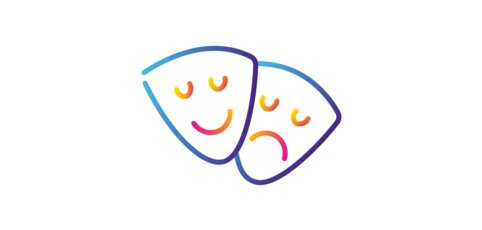Music therapy and autism
Published on 10 March 2016
Author: Janet McLachlan
Janet McLachlan, Head Music Therapist at Nordoff Robbins Scotland, gives an insight into music therapy and autism through case studies. She explains how music can cross boundaries, providing a unique way to connect, empower and celebrate the individuality of every autistic person.
At the music therapy charity Nordoff Robbins Scotland we are committed to making music change the lives of autistic people. We work with around 125 autistic adults and children each week in education, health, social care and community settings across Scotland. Nordoff Robbins Scotland also provides music therapy at our charity centres in Glasgow, West Lothian, Fife and Dundee.
Music therapy
Music therapy usually takes place in 1:1 or small group sessions on a weekly basis. Music therapists tailor their approach to meet the needs of each individual, working to build a therapeutic relationship and to foster interaction through live improvised music using a wide range of instruments, songs and music technology.
There is a growing body of research evidence that demonstrates the effective outcomes of music therapy. The benefits are wide-ranging and specific to each person’s needs. Areas of positive impact for an autistic person can include improved:
- communication skills
- social development
- self-expression
- emotional support
- cognitive development
- empowerment
- creativity.
Below are some short cases to illustrate how music therapy can benefit autistic people, and why music is effective in creating change. All names have been changed.
Case studies
Rosie
Rosie (7) spent much of the day apparently isolated from the world around her, either curled up quietly or jumping around seemingly randomly whilst making high pitched vocal sounds. The therapist provided music to precisely match her movements and the expressive sounds that she made – jumping, banging, screaming or whimpering.
Rosie began to vocalise in the pitch of the music and when the therapist followed her lead, she experienced a new sense of control and connection with the world around her. She began to give eye-contact and interact, firstly with the therapist, and then with other people in her life. The music therapist is now looking to support Rosie to develop her vocal sounds into spoken words.
Why? We are all innately musical. Rhythm is evident in our heartbeat, our walking, running and breathing. We use pitch and tone for expression in our voices, from laughing to crying. Even for a person who is highly isolated, these musical elements are always there and offer a powerful channel for communication.
Ewan and James
Ewan (12) and James (14) were both very interested in making music on their own. Ewan made intricate patterns of melody and chords on a keyboard. James sang the “SpongeBob” song repeatedly throughout the day. They could both become fixated on their own music, finding it hard to deviate, and they both had difficulty with interpreting social cues involved in direct interaction.
By working together in music therapy using percussion and also music technology, Ewan and James found they could be united in a common rhythm. They could have fun sharing a musical dialogue that doesn’t rely on direct eye contact or close proximity. They ultimately created their own song that was presented at a school concert.
Why? Music is a social experience and focuses on what we share as human beings. Rhythm, pitch and playfulness are cues to communication from early infant interaction, and throughout our life.
Sanjeev
Sanjeev (16) found it very difficult to transition from one space to another, and often became ‘stuck’, feeling highly anxious and overwhelmed by sensory stimulation. The therapist matched rhythmic beats to his movements - “move your feet to the beat” – and through rhythm Sanjeev discovered a new sense of stability and order.
This enabled him to move firstly into the therapy room, and eventually to transition smoothly and with confidence around the school. He now taps or drums patterns on his knees to comfort and focus him.
Why? Musical patterns (from strongly rhythmic to flexible and ‘loose’) can provide what an autistic person needs to help them to regulate their thoughts and brain processes, creating more coherent and adaptable responses to the world around them.
Harry
Harry (37) became distressed at regular points throughout the day and tried to hurt himself and often hit out towards others. Staff at his care home felt that this related to his memories of traumatic childhood experiences, but Harry didn’t have the language ability to relate what had happened to him.
By working in a 1:1 session with the music therapist, Harry used instruments and his vocal sounds to express himself each week. He was supported to communicate and process his feelings of sadness, anger and pain. He was always calm and settled after his music therapy sessions, and increasingly throughout the rest of his week. He was able to take part in more activities and social events. Staff felt that ongoing music therapy sessions significantly improved the quality of Harry’s life.
Why? Music is an emotional language, and offers a directness of expression that can bypass cognitive processes involving thought and spoken words. It can enable a deep level of emotional support.
Reflection
Over the past 12 years I have had the privilege of making music with a great range of different autistic people. Each one of them has inspired me with their own melody, rhythm or song. I feel that it is through music that the uniqueness and creativity of every autistic person can be truly celebrated.
Further reading
- Nordoff Robbins Scotland
- The British Association of Music Therapy
- All music therapists are regulated by the Health and Care Professions Council



